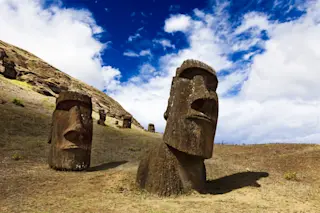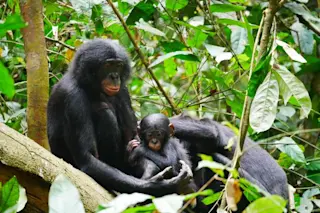In early October, a fire spread across the remote Pacific island of Rapa Nui, known to many as Easter Island. The blaze was so intense that NASA satellites captured images of the charred land. After the flames subsided, photos from the island revealed the destruction. Many of the island’s famed statues were charred beyond repair.
Rapa Nui has long been famous for its 1,000-plus massive statues, called moai. These large statues resemble heads and were carved from volcanic bedrock between A.D. 1250 and 1500. As many as 80 of them were damaged in the fire.
Scientists have been studying the moai for hundreds of years in order to learn more about the Polynesian settlers who came to the isolated island almost a millennium ago. For a time, archeologists thought the island’s inhabitants committed ecocide in order to transport the moai. Only in recent years have scientists learned more about these ...















